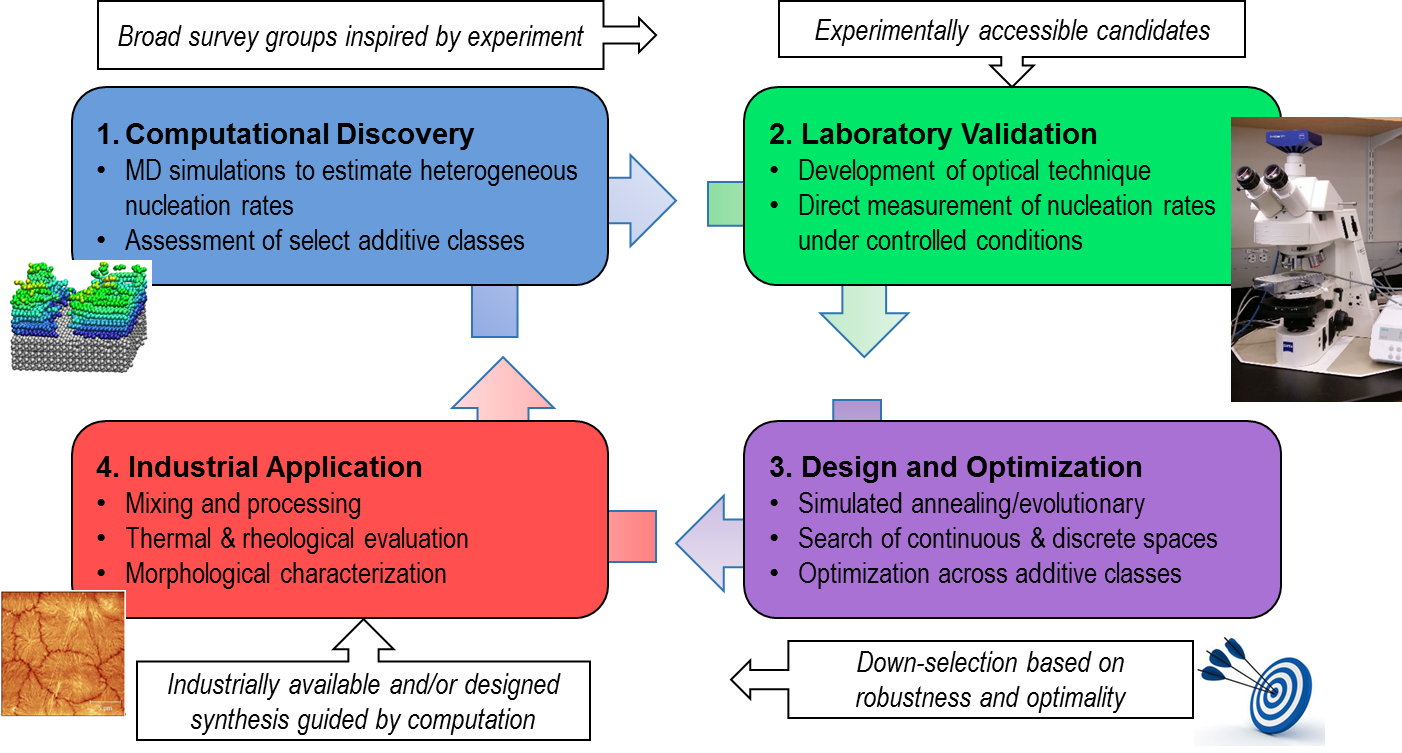Heterogeneous nucleation
Many polymers begin crystallizing by forming small crystalline nuclei at interfaces with other foreign materials in a process called heterogeneous nucleation. We are characterizing this process with experiments and molecular dynamic simulations to improve our understanding and predict the nucleating efficiency of new materials. Based on this increased fundamental understanding of heterogeneous nucleation and in conjunction with the Braatz lab, we are also developing and applying optimization schemes to choose the best nucleating agent to achieve a particular crystallization behavior and morphology, as well as exceptional thermal, mechanical, and optical properties.
Heterogeneous nucleation experiments/simulations
Personnel: Nathan W Volchko
Molecular simulations provide an excellent avenue for investigating the initial moments of nucleation occurring on the nanometer-nanosecond time scale. We can directly observe how oligomer molecules are interacting with a foreign surface and from this knowledge, we can characterize the different fundamental mechanisms that can occur for different classes of materials. However, the trends observed in simulation might not always be an accurate depiction of reality, so we have joined this investigation with laboratory experiments that investigate nucleation of full sized polymers at the micron scale under controlled conditions. The interplay of these two different methods allow us to confirm/disprove what is observed with simulation, while the simulations allow discovery of novel nucleating materials that are open for further research.
